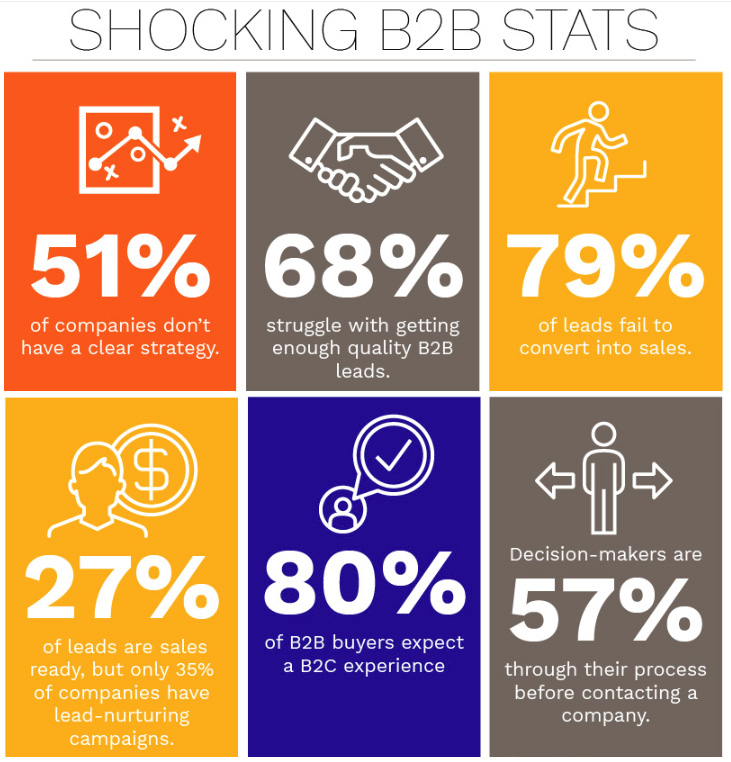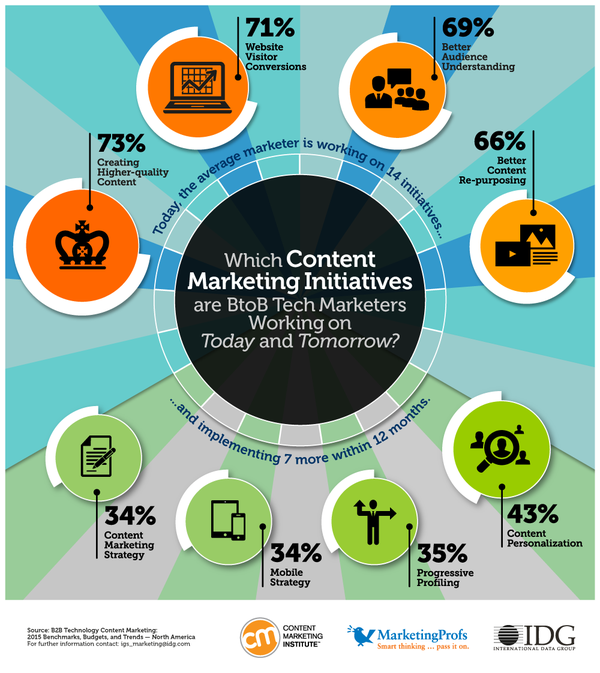Table of contents:
- What Is B2B Digital Transformation?
- Digital Selling and Marketing
- Digital Experience Innovation
- Digital Operating Model Renovation
- Conclusion
What Is B2B Digital Transformation?
In simple terms, B2B digital transformation involves implementing digital solutions to streamline processes and elevate the customer journey. While earlier digital initiatives focused primarily on internal efficiency, the current landscape revolves around delivering personalized buyer experiences and improving customer satisfaction.
For B2B companies, this means building a digital transformation ecosystem—a connected network of tools, platforms, data systems, marketing channels, and ecommerce infrastructure. This ecosystem may include marketing automation, CRM, data analytics, ecommerce platforms, and sales enablement tools. Many companies are also shifting from traditional distributor-only models to selling directly to their customers via a well-defined B2B ecommerce strategy, reducing dependency on intermediaries and creating stronger customer relationships.
- Global spending on digital transformation technologies and services is estimated to have grown 10% in 2020. (IDC)
- Experience-led companies have 1.6 times higher customer satisfaction rates and 1.9 times higher average order value. (Adobe)
- 70% of companies either have a digital transformation strategy in place or are working on one. (Tech Pro Research)
- Intelligent systems will drive 70% of your customer engagements by 2022. (Forrester)
B2B Digital Transformation is different for different companies but usually involves improving systems, looking for digital solutions and developing a streamlined experience. It usually includes rearranging the selling channels and some B2B companies even restructure to sell directly to the customer via ecommerce channels.
Digital transformation is considered to be an opportunity for growth. It is demonstrated by the B2B companies that shifting to digital can offer significant advantages in sustaining the business through:
- Alternative channels for customer engagement: There has been a significant increase in the usage of Zoom, Teams, Slack, and other kinds of collaboration and meeting apps
- The parts of the supply chain should keep working: ecommerce has proven less prone to disruption compared to the call center or face to face channels
- Reduce expenses: with the help of data analysis to reveal and target cost reduction
- Maintain cash flow via business model redesign: a valuable cash flow buffer is provided by SaaS business models regardless of decelerating demand.
These advantages are significant in this troubled time, but they will also be advantageous once the COVID-19 crisis is over.
3 digital transformation shifts that can be used to sustain business as much as possible during this crisis as well as to increase customer demand when the economy returns to normal include:
- Digital marketing and selling
- Digital experience innovation
- Digital operating model renovation stand out
It is considered imperative by the B2B leaders to identify and pursue those digital gains that can also elevate future performance.
This post will guide you on where to look and what to prioritize in each of the three transformational shifts.

Digital Selling and Marketing:
With market unpredictability and rapidly shifting customer expectations, B2B customers want clarity about supply chain status, product availability, and market trends. The shift to digital selling has made the B2B buying journey more transparent and more self-guided than ever.
Ways digital transformation supports customer acquisition and retention:
- Account-Based Marketing (ABM) – A strategic approach where sales and marketing teams collaborate to engage high-value accounts. Relevant, targeted content is at the core of effective B2B content marketing, ensuring the right message reaches decision-makers at the right time.
- Customer insights and analytics – Digital monitoring tools and analytics platforms now replace traditional face-to-face selling. This is also where the role of AI in digital transformation becomes critical—AI systems capture behavior patterns, predict demand, and deliver personalized recommendations.
- Direct ecommerce (DTC model for B2B) – Companies are increasingly shifting to direct sales, powered by long-term B2B ecommerce strategies that improve margins and remove reliance on multiple channel partners.
These changes demonstrate that digital transformation is more than adopting new tools—it is redefining how revenue is generated in a B2B sales digital transformation environment.

Digital Experience Innovation:
Digital experience innovation fulfills customer needs in real time, often with minimal human involvement.
Examples include:
- Virtual technical support – Digital help centers, video tutorials, FAQs, and automated chatbots allow customers to self-solve common challenges. This demonstrates how the role of AI in digital transformation extends into customer service automation.
- Online learning and onboarding – Digital onboarding hubs help customers quickly understand products, speeding up adoption and reducing support time.
- Centralized communication hubs – Digital bulletin boards or customer portals share critical updates instantly, improving transparency and strengthening trust.
By treating the buying journey as part of a broader digital transformation ecosystem, companies gain richer customer data, improve service responsiveness, and reduce operating costs.
Digital Operating Model Renovation:
Companies are restructuring business operations to support digital-first growth. Common initiatives include:
- Subscription and recurring revenue models – Predictable revenue streams built on long-term customer relationships rather than one-time transactions.
- Agile workflows – Faster decision-making cycles supported by analytics and automation.
- Again, the role of AI in digital transformation becomes visible—AI automates repetitive tasks, analyzes performance trends, and accelerates strategic planning.
When combined—B2B content marketing, a strong B2B ecommerce strategy, and AI-powered decision-making—B2B organizations build an agile operating model that’s ready for growth.
Conclusion:
Digital transformation is no longer optional—it’s foundational. Modern B2B leaders are:
- Leveraging the role of AI in digital transformation
- Creating seamless buying experiences through B2B sales digital transformation
- Investing in content-driven lead pipelines through B2B content marketing
- Building long-term revenue streams through a strategic B2B ecommerce strategy
- Treating business systems as part of a unified digital transformation ecosystem
The future belongs to companies that embrace digital maturity, adopt AI-driven intelligence, and place customer experience at the center of every decision.
Deepak Wadhwani has over 20 years experience in software/wireless technologies. He has worked with Fortune 500 companies including Intuit, ESRI, Qualcomm, Sprint, Verizon, Vodafone, Nortel, Microsoft and Oracle in over 60 countries. Deepak has worked on Internet marketing projects in San Diego, Los Angeles, Orange Country, Denver, Nashville, Kansas City, New York, San Francisco and Huntsville. Deepak has been a founder of technology Startups for one of the first Cityguides, yellow pages online and web based enterprise solutions. He is an internet marketing and technology expert & co-founder for a San Diego Internet marketing company.



